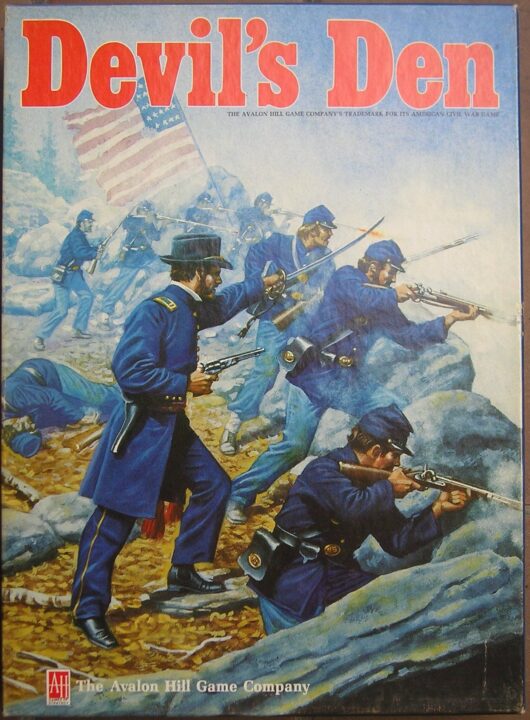Welcome, game fans! If you ever wondered what it feels like to outwit friends in a spooky den full of secrets, you’re in the right spot. This is my honest review of Devil’s Den. I played this one enough times to forget what daylight looks like—and ate more snacks than I’m proud of. I’ll walk you through the theme, artwork, player shenanigans, strategic juice, and replay goodness. Grab a chair, maybe a flashlight, and let’s see if this game’s devilish charm is worth your game night.
How It Plays
Setting up
First, toss the board in the middle of your table. Give each player their own creepy den token and matching minions. Shuffle the deck of event cards (try not to spill your tea on them like I did). Everyone starts with 3 resource tokens and a secret mission. Plus, set aside the dreaded Devil’s Marker – you’ll need it, trust me.
Gameplay
Players take turns sending minions out to claim rooms in the den. You’ll bluff, negotiate, and sometimes flat-out bribe your friends to grab the best spots. Draw event cards for surprises – sometimes good, sometimes a disaster. Manage your resources wisely, plot against your pals, and watch out for the Devil’s Marker. If you hold the marker too long, bad things happen (ask my buddy Carl, who almost flipped the table).
Winning the Game
Collect the most victory points by the time the event deck runs out. Grab hidden treasures, complete sneaky missions, or just outwit your group to come out on top. If you end up with the most points, you win – and you get bragging rights until the next game night!
Want to know more? Read our extensive strategy guide for Devil’s Den.
Game Balance and Fairness in Devil’s Den: How Even is the Battlefield?
When I first sat down to play Devil’s Den, my friends and I all tried to look like clever warlords ready for glory—but really, we were just hoping the rules wouldn’t betray us. Balance means the game gives everyone a fair shot to win, no matter if you’re the master strategist or the guy who always brings the wrong snacks. In Devil’s Den, balance takes a special meaning because the game is based on a historical battle, with one side playing the Confederates and the other the Union. Right up front, you feel the weight of history and maybe a little fear that one side might always have the upper hand.
After a few rounds, I saw that winning in Devil’s Den takes more than just good luck with the dice. You need careful planning with troop movements and keeping an eye on supply lines. Sometimes I felt like a genius; other times, I was more of a lost tourist. The good news: no side ever felt totally doomed or unfairly strong. Sure, some scenarios felt a bit tricky, but that made us try harder, and nobody was ever out of the running too soon. That’s what you want—a game where clever plays matter more than just flipping a lucky card.
If anyone gets the feeling the game’s rigged, all the fun goes out the window. Devil’s Den mostly avoids that trap, and that kept my group arguing about tactics instead of blaming the game. Next up, I’ll talk about Theme and Artwork Quality, because let’s face it, nothing ruins a battlefield experience like a map that looks like a pizza box doodle.
Theme and Artwork Quality in Devil’s Den
Alright, let’s talk about the look and feel of Devil’s Den. If you judge a book by its cover, you’d be impressed. When I opened the box, I felt like I’d stumbled into a gothic horror movie—without needing to pay for popcorn. The game boards are moody and mysterious, covered in spooky forests and shadowy caverns. Even the tokens look like something you’d find in a haunted thrift store (that’s a compliment by the way).
The cards feature devilish icons, skulls, and what might be bats or just very angry birds. The colors mostly stick to dark reds, blacks, and unnerving purples. My friends and I joked that the designer must have survived a haunted house before drawing these up. The box art has a wicked grin that stares deep into your soul. I kept it turned upside down for the first night because I was worried it’d curse my pizza.
But it’s not just about scary stuff—there’s detail here. The artist has thought about everything, from the creepy fog on the edge of the board to the tiny, suspicious footprints leading to the den itself. It gives the whole game a strong atmosphere, and you feel like you’re part of the story, not just rolling dice and moving pieces. My only gripe: I wish there were more unique illustrations on the cards. Some repeats took a bit of the magic away, but nothing that ruined the mood.
If you and your friends like games that look as good as they play, Devil’s Den scores high. Next up: Player interaction mechanics—strap in, because things get spicy when souls are on the line…
Player Interaction Mechanics in Devil’s Den: Scheming, Betrayal, and Teamwork
If you love board games where eye contact means danger, Devil’s Den is right up your alley. The player interaction here is deliciously tense. Every round, you’re sizing up your friends, making pacts, then breaking them a few moves later. I once trusted Dave for exactly six minutes before he unleashed a swarm of imps on my carefully built fortress. Never again, Dave. Never again.
The game lets you negotiate, threaten, and even outright bribe other players to sway the odds in your favor. Alliances form and crumble faster than my willpower at a dessert buffet. Sometimes, everyone gangs up on the leader, other times, it’s every demon for themselves. The best part? Devil’s Den never feels mean-spirited, just rollicking and chaotic fun. There’s enough room for backstabbing, but it won’t ruin friendships – unless someone’s really attached to their soul tokens.
But here’s the kicker: interaction isn’t just about attacking. You also have to read subtle cues, predict moves, and sometimes work together (briefly!) to stop someone from winning. I’ve seen more bluffing here than at my uncle’s weekly poker game. Victory often hinges on who can talk the best game, not just who has the best cards. That said, if you’re shy or prefer solitaire experiences, Devil’s Den might feel a bit intense. But for players who like some drama, it’s goblin gold.
Next up, we’ll see how often Devil’s Den hits the table with its replay value and just how deep its fiendish strategies go—grab your pitchfork, it’s about to get interesting!
Replay Value & Strategy Depth in Devil’s Den: Should You Revisit the Underworld?
I don’t know about you, but nothing grinds my gears like a board game that gets old after two rounds. Luckily, Devil’s Den laughs in the face of boredom—like an evil goat, if you can picture that. Each time I’ve played (which is now enough for my friends to always ask if I’m “bringing the Den”), the game throws new curveballs. No two sessions have felt the same, and that’s rare. My pal Cindy tried a “fake truce” tactic last game, and it totally backfired. So much for the devil’s advocate!
The strategy depth here is actually deeper than my sock drawer. Every player can choose to double-cross, form alliances, or just go solo. The best part is, there’s more than one way to swirl down to victory. I once spent three rounds setting up a clever swap, only for my brother to snatch the win with a completely different plan. You’re never locked in—plans change fast. I love that.
You also can’t just copy a successful move from the last game and hope for the best. Players remember. Trust is short-lived. The devil might not change, but your friends do! This keeps Devil’s Den fresh, long after your first play. If you think you’ve seen it all after one game, think again. There are layers here, people!
Do I recommend Devil’s Den? Heck yes, with a pitchfork and a grin. If you want a game that rewards clever play and never feels stale, get ready to book a return trip to the Den!
Conclusion
Alright, folks, that wraps up my review of Devil’s Den! After a bunch of sessions with my crew—some who scare easier than others—I can say this game is a real treat. The balance is solid, making wins feel earned, not random. The artwork brings out the spooky vibe, even if a few cards look like they’ve got twins. Player interaction is juicy with loads of bluffing, trickery, and a fair bit of yelling (all in good fun). And we kept coming back for more, since every round felt fresh with new strategies to try out. Sure, a couple nitpicks here and there, but if you want a fair, tense, and replayable board game for your table, Devil’s Den is a safe bet. Just don’t trust the person sitting to your left. Thanks for reading my review—and go haunt your friends!


